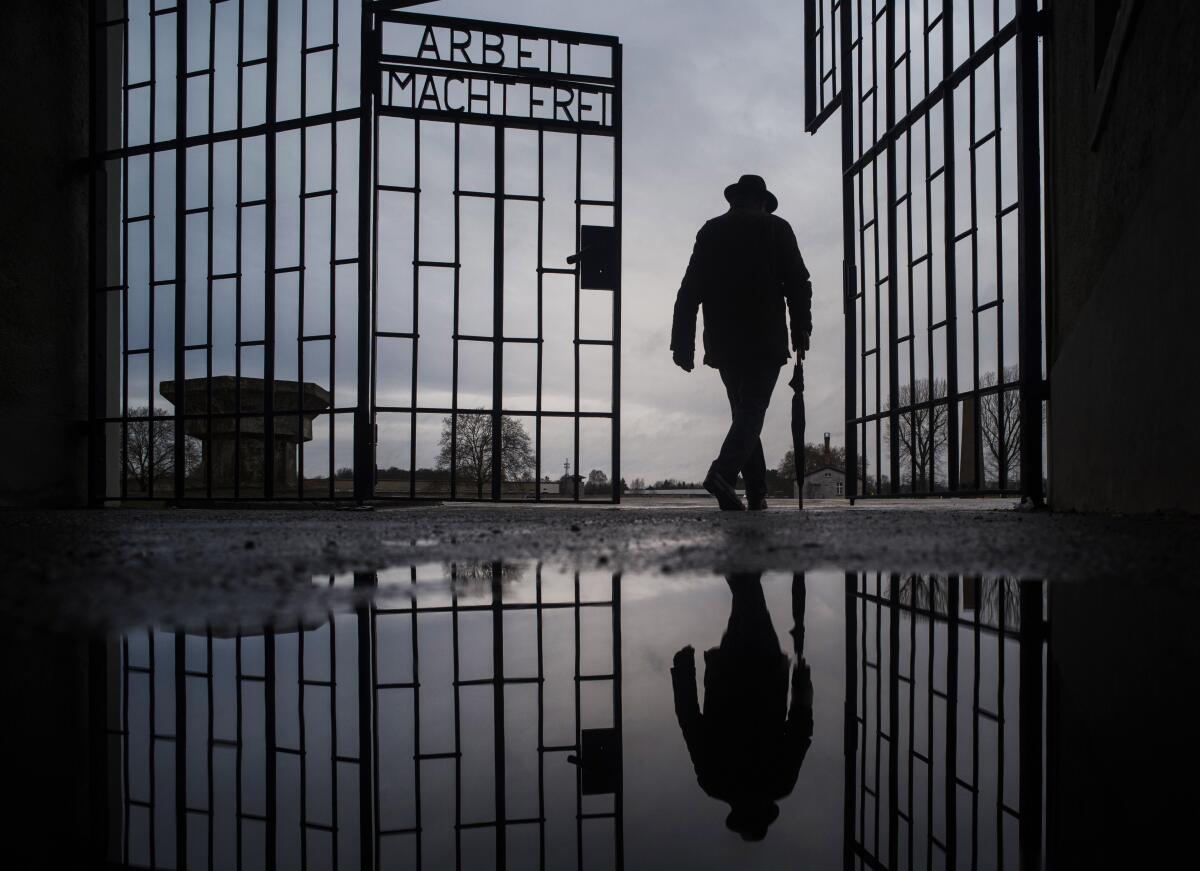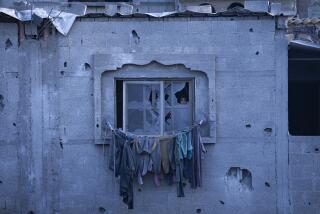Opinion: Arizona plans to use cyanide on death row. Nazis killed millions with the same gas

- Share via
High school history class taught me — and almost certainly you — that the Nazis murdered millions of Jews and other persecuted individuals during the Holocaust between 1941 and 1945. At extermination camps like Auschwitz, victims were stripped naked and herded into gas chambers disguised as crude bathhouses, supposedly to take showers before entering camp. Instead, they were poisoned to death by the lethal gas Zyklon B.
When I think of the horrors of the Holocaust, it’s details like those that disturb me the most. And when I learned that Arizona is preparing to use the same lethal gas to execute prisoners on death row, it’s details like those that rush into my head.
The Guardian first reported that the Arizona Department of Corrections has procured ingredients for hydrogen cyanide, the deadly gas trademarked as Zyklon B during World War II. According to documents obtained by the Guardian, corrections officials have also refurbished an old gas chamber at a prison in Florence, Ariz., and conducted a series of tests to ensure the chamber’s functionality.
The use of hydrogen cyanide to execute prisoners is neither new nor unique to Arizona. Lethal gas was first used as an execution method in Nevada in 1924. It was most recently used in 1999 to execute Walter LaGrand in Pima County, Ariz.
LaGrand’s execution did not go smoothly. It took him an excruciating 18 minutes to die after the gas was administered, during which he was twitching, choking and in visible pain, according to witnesses.
Poisonous gas is still authorized for use in six other states, all of which employ lethal injection as a primary execution method. Gas has been used for only 11 executions in the past 50 years because it’s considered by many to be cruel and unusual punishment.
Fordham University law professor Deborah Denno, who has done extensive research on the death penalty, considers gas particularly barbaric. “Of all the methods that we’ve ever used in this country, lethal gas in the way that Arizona plans to use it is the worst of them,” she said. “Every single time you use it, there’s no question that it’s going to be inhumane.”
That’s why a federal judge in California barred the state from using gas as an execution method in 1994, a decision that never spread to the rest of the country.
“It was overwhelmingly likely that lethal gas was going to be declared unconstitutional by the Supreme Court,” said Robert Dunham, executive director of the Death Penalty Information Center. “It is overtly and obviously torturous.”
But the high court never made that ruling, and now Arizona appears ready to use the method again as it prepares to resume executions. The state had paused executions in 2014 after a horribly botched lethal injection forced a reevaluation of death penalty procedures.
Somehow, that reevaluation could lead to the first lethal gas use on death row since 1999. The decision-makers in Arizona’s Department of Corrections evidently did not prioritize humane execution methods, nor did they consider the trauma inflicted on Jewish communities by reintroducing a tool the Nazis used for genocide.
Capital punishment is wrong for so many reasons, but a particularly insidious offense is the way the death penalty has desensitized us to cruelty. Only utterly, helplessly desensitized corrections officials would think it was acceptable to bring back Zyklon B. Only a law as primitive and regressive as capital punishment would trigger a regression back to Holocaust-era techniques.
“Even without the history, it’s an awful and painful way to kill somebody,” Dunham said. “It’s also the same way the Nazis murdered more than a million people. If Arizona didn’t know that, then they’re completely incompetent. And if they did know that, it’s even worse.”
The closer you look at what’s going on in Arizona, the scarier it gets. Wendy Lower, chair of the Academic Committee of the United States Holocaust Memorial Council, sees various parallels between present-day Arizona and prewar Germany, including alarming efforts by state lawmakers to undermine democracy. These include attempts to reverse the vote in last year’s presidential election and to make it harder to vote in the future.
“The echoes of history are very strong,” Lower said. “As a scholar of the Holocaust, this is especially disturbing because of the context in which it’s unfolding.”
The death penalty is the mechanism that makes these parallels possible. It’s the vehicle that allows states to put time and effort into determining the best way to take a life. No vehicle like that should exist anywhere.
For Holocaust survivors, Arizona’s actions must strike a chord the rest of us can’t understand. For the broader Jewish community, of which I am a part, this news brings disgust and fear. In the midst of rising antisemitic incidents and rhetoric across the country, a callback to genocide compounds the pain we already feel.
“It’s really chilling and alarming just to see the term Zyklon B being used again,” Lower said. “It is a complete insult to Holocaust survivors and their family members and their legacy.”
If the Nazis did it, we should probably avoid it, right? Although I’d consider that an obvious, easy-to-spot moral line, Arizona has no problem crossing it. I think that centuries of capital punishment in this country have blurred some boundaries.
More to Read
A cure for the common opinion
Get thought-provoking perspectives with our weekly newsletter.
You may occasionally receive promotional content from the Los Angeles Times.











